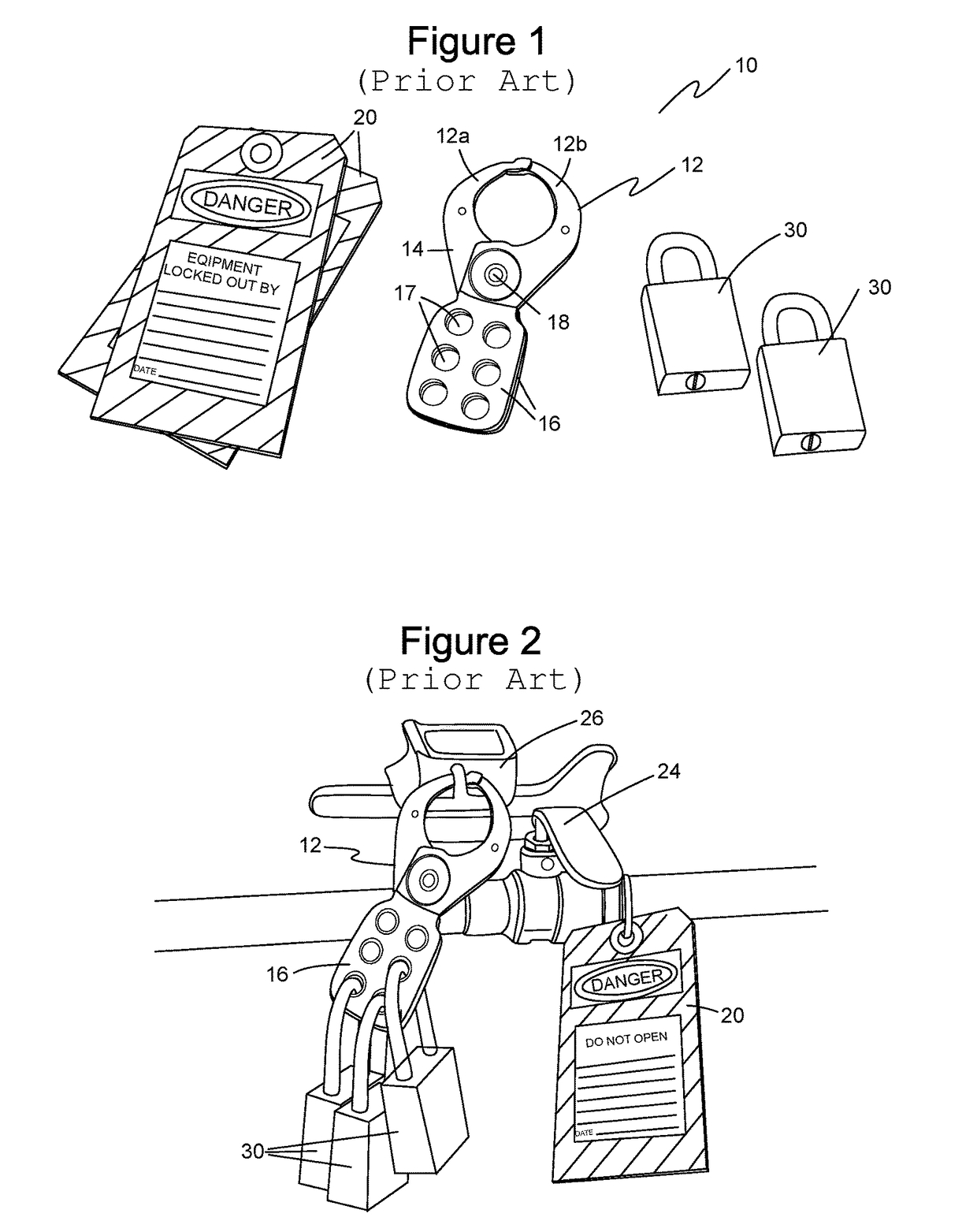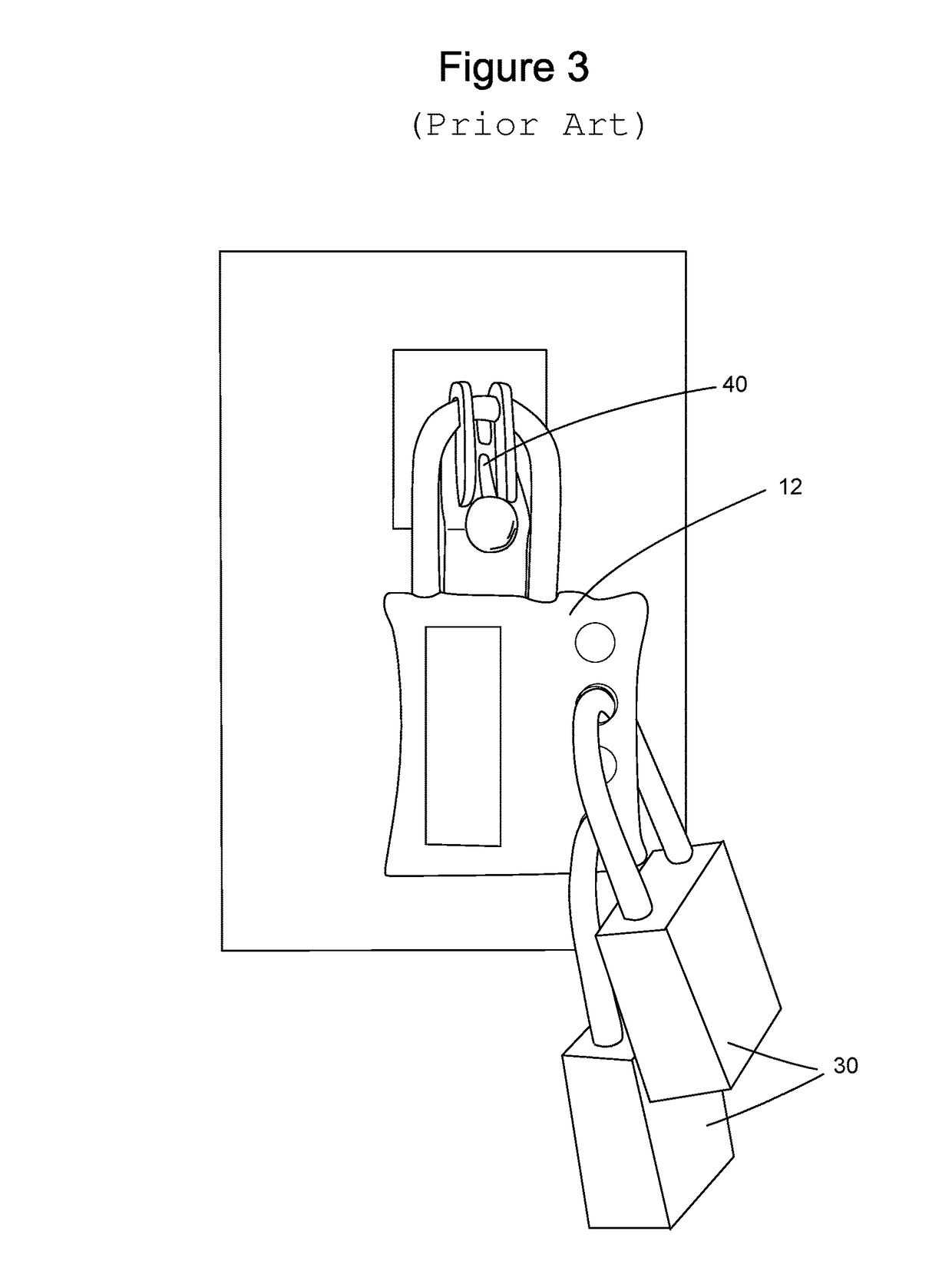Lockout system for energy sources
a technology for energy sources and locks, applied in the field of industrial safety devices, can solve the problems of confusion and disorganization of the general appearance of lockout/tagout equipment, unwieldy and inconvenient use of prior-art kits, and inconvenient us
- Summary
- Abstract
- Description
- Claims
- Application Information
AI Technical Summary
Benefits of technology
Problems solved by technology
Method used
Image
Examples
Embodiment Construction
[0046]Exemplary embodiments of the present invention are illustrated in FIGS. 4-14. FIG. 4 illustrates a perspective view of one embodiment of a lockout system 100 of the present invention that includes a lockable hasp assembly 102 and a plurality of tags 104 that can be independently received by and removed from hasp assembly 102.
[0047]One embodiment of hasp assembly 102 has an assembly body 103 that includes a back plate 106 and a front plate 108 attached to the back plate. A locking bar 110 is slidable between back plate 106 and front plate 108. A hasp 112 is attached to the assembly body and includes a first hasp jaw 114 and a second hasp jaw 116 operable between an open position and a closed position in response to movement of the locking bar 110 from an unlocked position to a locked position, respectively.
[0048]As discussed in more detail below, locking bar 110 in one embodiment slides along body 103 in engagement with second hasp jaw 116, thereby causing second hasp jaw 116 t...
PUM
 Login to View More
Login to View More Abstract
Description
Claims
Application Information
 Login to View More
Login to View More - R&D
- Intellectual Property
- Life Sciences
- Materials
- Tech Scout
- Unparalleled Data Quality
- Higher Quality Content
- 60% Fewer Hallucinations
Browse by: Latest US Patents, China's latest patents, Technical Efficacy Thesaurus, Application Domain, Technology Topic, Popular Technical Reports.
© 2025 PatSnap. All rights reserved.Legal|Privacy policy|Modern Slavery Act Transparency Statement|Sitemap|About US| Contact US: help@patsnap.com



